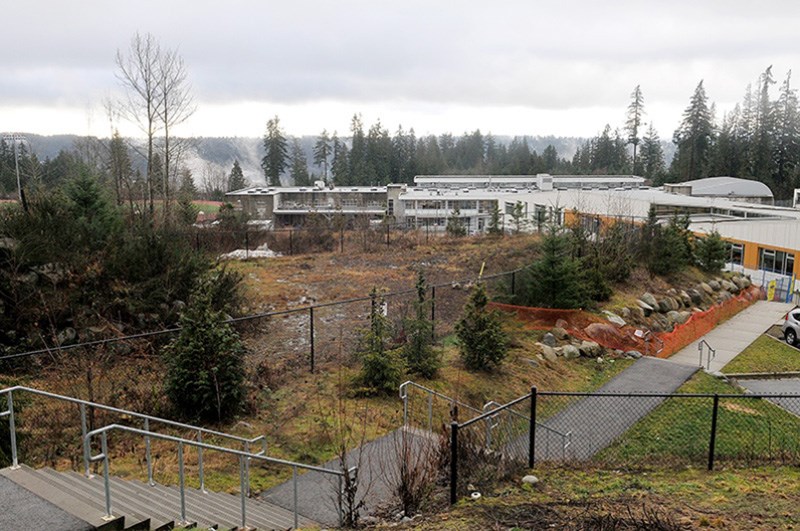It’s been more than three years since routine tests of ground water near Eagle Mountain middle school in Anmore found elevated levels of fecal coliform and E coli at the bottom of a hillside.
And it looks like a fix may not be coming any time soon.
Property owners of the 51-unit strata Anmore Green Estates say they don’t have the money to pay for fees being charged by the village of Anmore and School District 43, on top of the engineering and construction costs for a hookup to a nearby sewer connection in Port Moody they’ve already agreed to cover.
“If a reasonable form of funding cannot be found to finance these fees, the AGE community cannot commit to paying them,” said Brandie Roberts of Anmore Green’s strata.
Roberts said provincial facilitator Debra Oakman recommended last spring that financing be provided through a loan from the Municipal Financing Authority (MFA), managed by the village of Anmore.
But the village rejected that idea.
Juli Halliwell, Anmore’s chief administrative officer, said money from the MFA can’t be used for private infrastructure projects, and Oakman’s recommendation has since been amended. She said providing financing through the village’s own reserve funds also wouldn’t work, as it would set an “unsupportable precedent” that could give all of Anmore’s homeowners the right to attain financing through the village for their private projects.
“We can’t say yes to some, and no to others for this type of financing, and we certainly cannot fund everyone,” Halliwell said.
Roberts said going to private banks would break the homeowners, who are already on the hook for about $1 million in total costs.
“We have serious concerns that the need to find private financing for the administrative fees will mean that AGE families will not be able to afford this process,” she said.
Last May, Oakman, who was appointed by the province to smooth negotiations, recommended Anmore Green’s homeowners, School District 43 and the village of Anmore support a cost structure to resolve the problem that included $500,000 for construction and an easement fee of $140,000 to access the school property, as well as a one time fee of $4,907 for each unit in the strata to connect to the Greater Vancouver Sewerage and Discharge District that administers the regional sewer system, and annual sewer treatment fees of $1,256 per unit.
Roberts said strata owners approved the plan in hopes construction could be completed in the summer before the school reopened in September.
SD43’s chief financial officer, Chris Nicholls, said it was also on board.
Halliwell said to speed a solution, the village also agreed to waive its fees, which she estimates amount to “tens of thousands of dollars.” As well, Anmore agreed to collect the easement fee on behalf of the school district through a parcel tax charged to AGE homeowners, interest free, for the next five years.
Halliwell said the process has been slow and complex because it involves eight separate municipal, regional and provincial agencies or entities.
“It has been an enormous effort and has taken countless hours of staff and volunteered time to arrive where we are now,” she said, adding the necessary pieces are all in place for construction to begin. AGE homeowners just have to figure out how they’re going to pay for it.
Meanwhile, the fencing that prevented school kids from accessing areas where contaminated water was found was removed last spring by the strata’s owners. Nicolls said another fence was subsequently erected by the ministry of environment.
He said the school district is concerned about the safety of students and staff and remains committed to moving the project forward.
An online petition started in the summer by parents of children attending the school urging the matter be resolved before kids returned collected more than 3,400 supporters.



